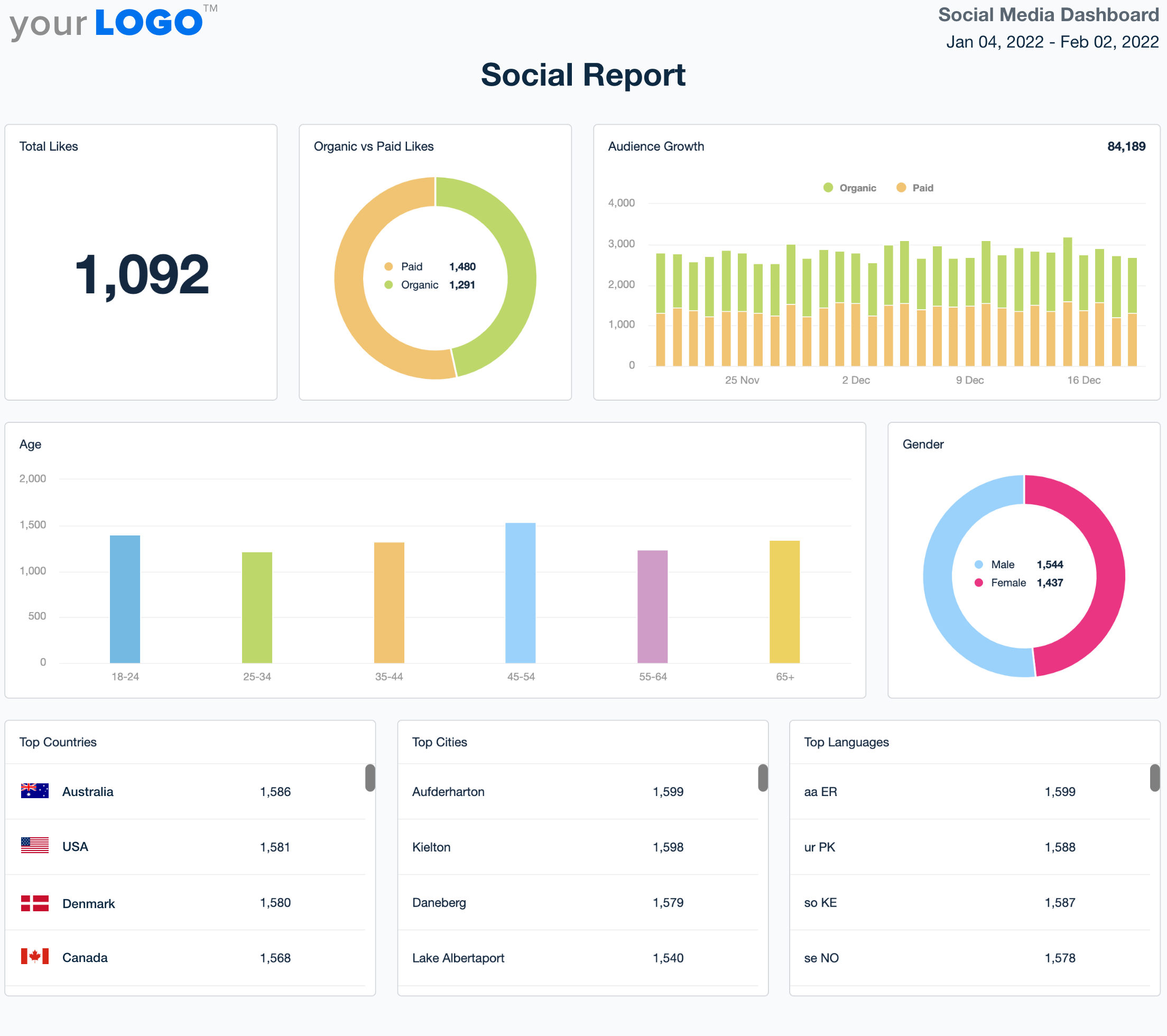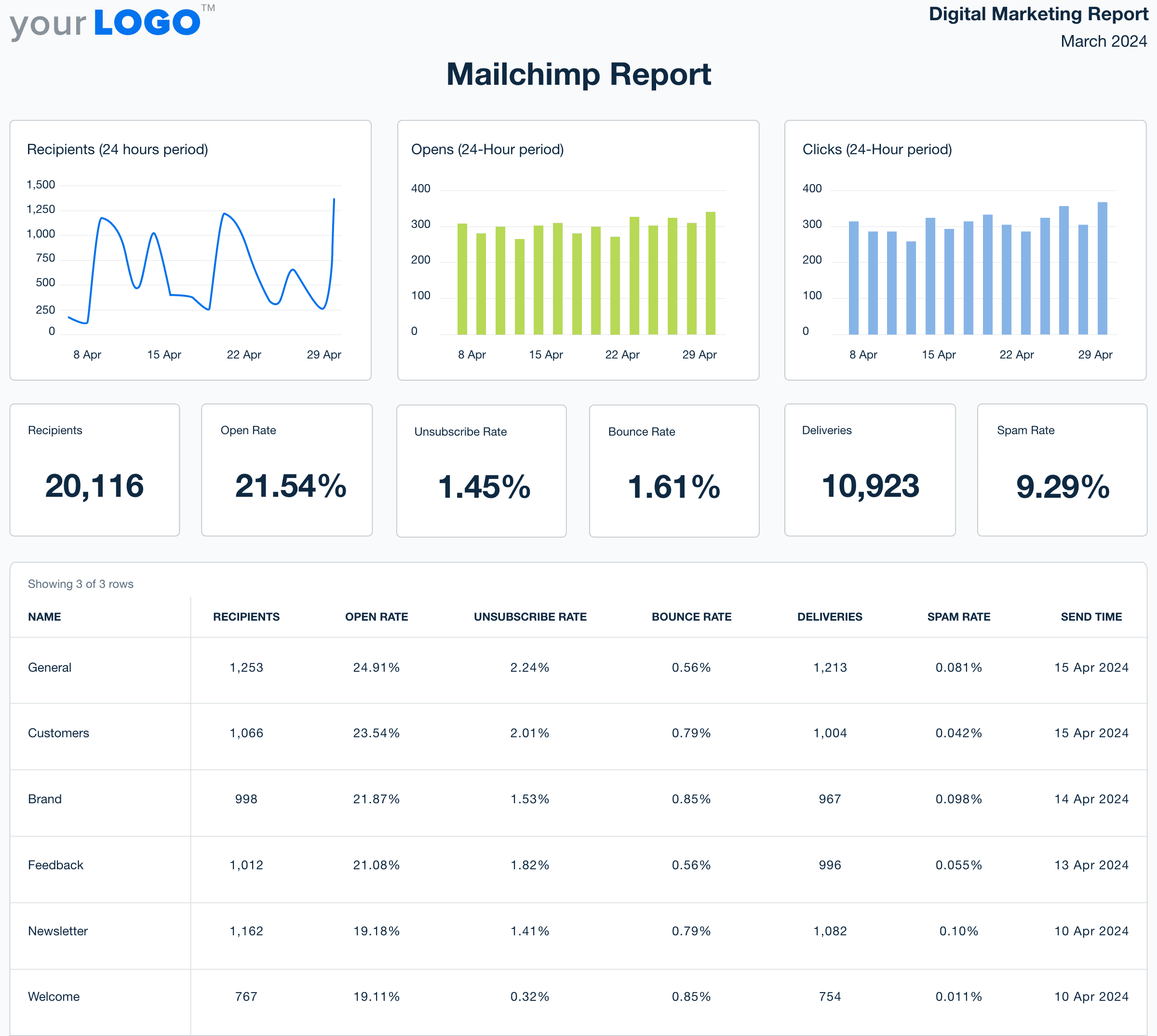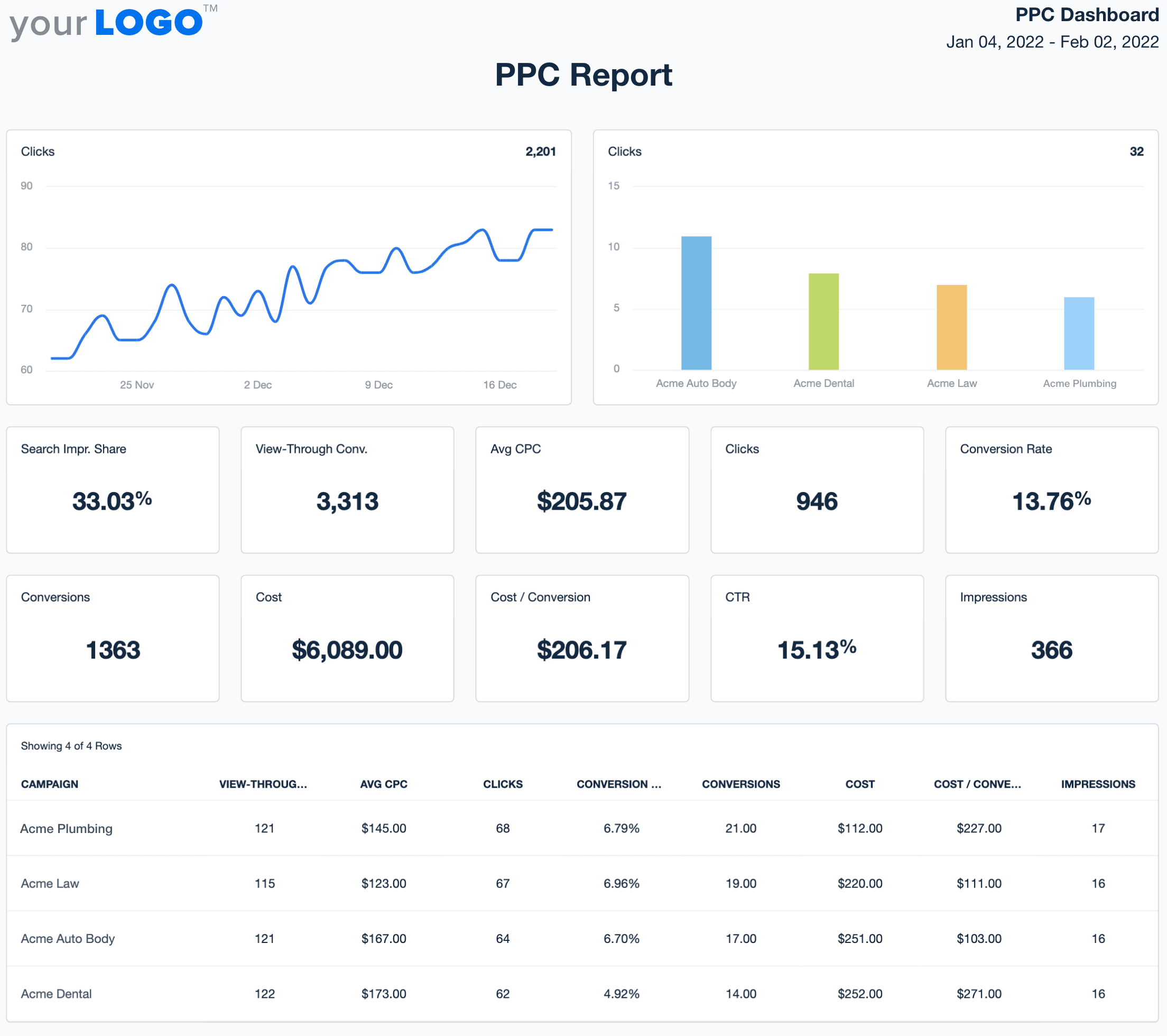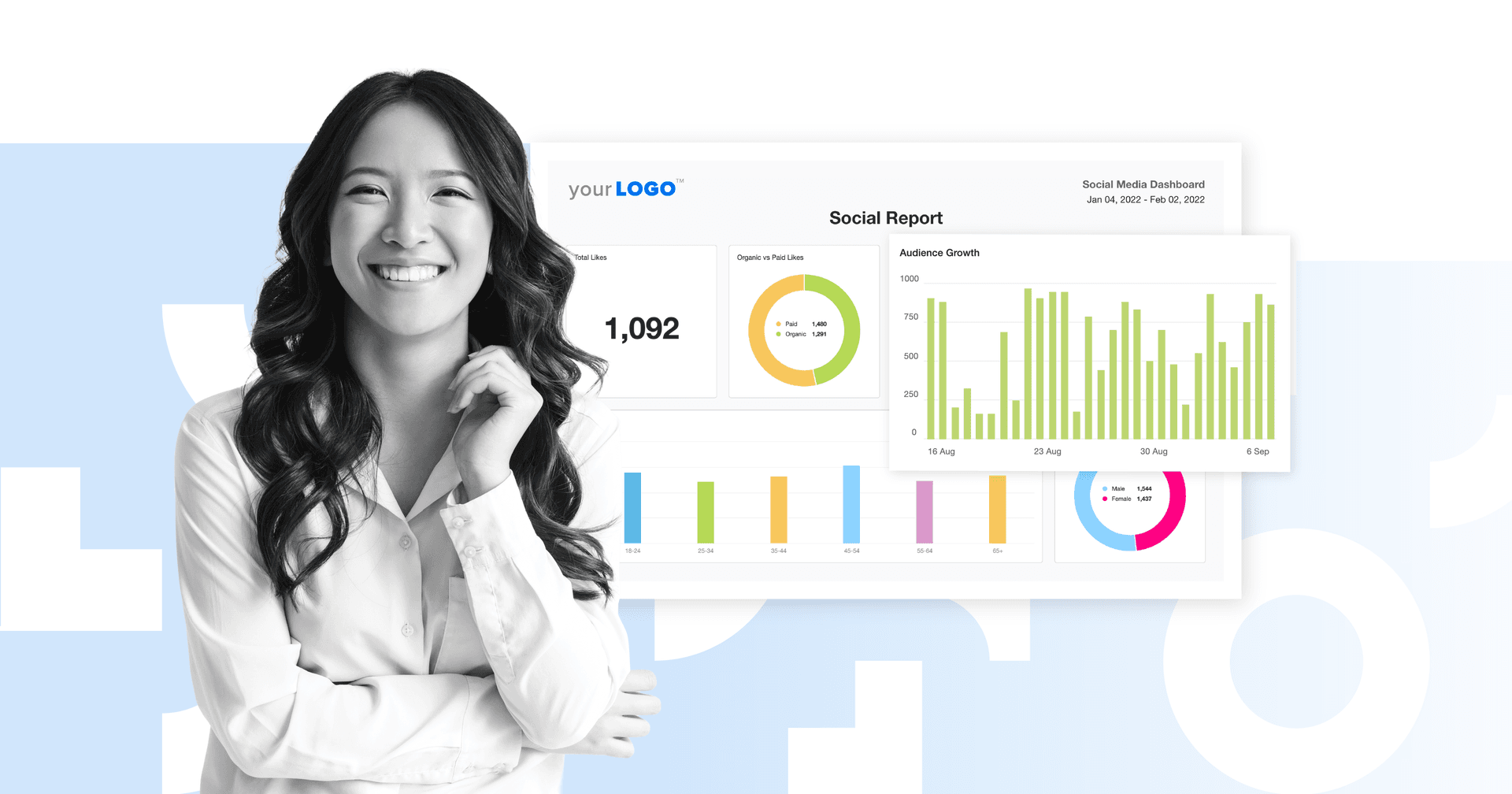Table of Contents
QUICK SUMMARY:
The best way to optimize your property management marketing efforts and effectively reach the target audience is to track certain metrics. This helps you keep a finger on the pulse of the success of your marketing strategy. Here, we cover the top 25 most important metrics for a property management marketing plan, including categories like paid marketing, social media, and SEO.
Competition. Resident retention. Rising costs. According to Forbes, these are just a few of the biggest challenges and trends the property management industry is facing in 2024. So if these issues sound familiar, you’re not alone. But don’t panic: There is a solution.
Tracking the metrics of your digital marketing efforts, which allows you to then improve and optimize your marketing where needed, will help you as (or your client) beat out that new complex across town, retain more tenants, and improve your resource allocation to cut costs without cutting quality.
In this guide, you’ll learn the most significant marketing metrics property managers and marketers should be tracking–whether you’re working at a property management company, real estate brokerage, or niche marketing agency. We’ll outline the importance of each metric, including examples for more complex metrics to help bring them to life. And you’ll also gain insight on the smartest property management marketing strategies to help lift a property above its competitors.
Metrics make all the difference. And these are the ones you need to know. Let’s get started!
Why Should You Track Property Management Marketing Metrics?
If you’re a marketing team working within a property management business (or even if you are the property owner), there are two major reasons why it’s critical to keep tabs on marketing metrics:
Measure the Effectiveness of Your Campaign: When you know what your metrics are and where they are, this gives you an idea of what works and what doesn’t. As a result, you’ll optimize your marketing strategy, ensuring your budget is wisely spent.
Remain Competitive: Like most local businesses, tracking metrics also helps you identify trends and opportunities, staying ahead of the competition and adapting to changing market conditions.
For marketing agencies working with property management companies, we’d also add that metrics demonstrate your value to your clients… which is important because it:
Reflects well on your performance reports
Helps make data-driven decisions
Provides transparency and accountability
25 Key Property Management Marketing Metrics to Track
Let’s dive into the top online marketing metrics property management companies and real estate marketing agencies should be using to track results. From search engine optimization to content marketing to social media pages, there’s no end of property management marketing strategies to reach local communities on digital platforms.
The key: Whichever property management marketing ideas you decide to focus on, keep a close eye on how they’re performing and tweak your marketing strategy where needed.
Leasing Metrics
Every successful property management business needs to watch these leasing metrics, which provide direct insight into the effectiveness of leasing efforts.
1. Tenant Acquisition Cost
Average cost of acquiring a new tenant for your property (also known as customer acquisition cost, or CAC). This is a core metric tracked by most property management professionals to understand the marketing costs associated with a successful rental.
How To Calculate It: Total Marketing Spend / Number of New Tenants Acquired
Example: If you spent $5,000 on marketing in a month and secured 10 new leases, your CAC would be $5,000/10 = $500.
Why It Matters: Demonstrates the cost-effectiveness of your digital marketing campaigns; optimize spending for maximum ROI.

Prove that your campaigns are generating leads for property management teams. Sign up for a free 14-day trial to see how AgencyAnalytics helps you track metrics and generate white labeled reports in seconds flat.
2. Lead Source
Tracks origin of your leads (social media, email campaigns, referral programs, etc).
How To Track It: Implement lead tracking within your CRM and tag leads based on their origin. Then use AgencyAnalytics to visually display lead origin in a white labeled report.
Example: If analyzing your lead sources shows that 50% of leads come from organic search, 30% from social media, and 20% from referrals, focus your marketing efforts into organic search.
Why It Matters: Understanding which channels drive the most qualified leads lets you focus your marketing efforts on high-performing sources.
3. Lead Response Time
Average time it takes your team to respond to a new lead inquiry.
How To Track It: Use CRM or lead management software to automatically log inquiry times and track response times.
Why It Matters: Fast response times are critical in a competitive market. Delays lead to lost leads and missed leasing opportunities.
Actionable Metrics are valuable numbers that fuel marketing and can be associated with clearly defined and measurable outcomes.
Cheryl Ingram, Managing Director, The Digital Media Collective
4. Conversion Rate
Percentage of leads that take a desired action (scheduling a tour, filling out an application) or who convert into tenants.
How To Calculate It: (Number of conversions / number of leads) x 100
Example: If 100 leads visit the website and 20 schedule a tour, the conversion rate for that action is 20%.
Why It Matters: Shows the effectiveness of your marketing funnel in moving leads toward becoming tenants.
5. Google Ratings
Average rating of a property on Google My Business.
How To Monitor It: Regularly check the Google My Business Profile; encourage satisfied tenants to leave positive reviews.
Why It Matters: Maintaining a Google rating of 4.5+ stars will significantly influence prospective renter decisions, building trust and credibility.
6. Average Days to Lease
Average number of days it takes to lease a vacant unit, from listing it to securing a signed lease.
How To Calculate It: (Total number of days vacant units were available / number of units leased)
Why It Matters: Minimizing vacancy periods is critical for maximizing revenue. A lower average days to lease indicates higher occupancy rates and a more efficient leasing process. This metric helps you identify bottlenecks in the leasing process.
Social Media Metrics
Social media marketing is one of the most effective property management marketing strategies to help reach new tenants. In fact, 45% of renters look at social media pages for the property they’re interested in. Use these metrics to help rental properties rise to the top on social media platforms.
7. Reach
Total number of unique users who have seen your social media content.
How To Track It: Most social media platforms provide reach metrics within their analytics dashboards.
Example: A post with a reach of 10,000 means 10,000 different users saw that post.
Why It Matters: Reach indicates the potential audience size exposed to a brand and content, influencing brand awareness. The more potential tenants know about a property, the higher likelihood of those tenants transforming into leads.
8. Engagement Rate
Measures level of interaction your social media content receives (likes, comments, shares, clicks).
How To Calculate It: (Total engagement / total reach) x 100
Why It Matters: Positive growth within the engagement metric suggests your content resonates with the target audience for a property, and carries the potential for your content to reach a wider audience organically–therefore increasing leads.
9. Follower Growth
Rate at which new followers are gained on social media platforms.
How To Track It: Monitor follower count on each platform over time, analyzing trends and the impact of specific campaigns. As a bonus, add goals and annotations to dashboards and reports so that stakeholders understand how your marketing strategies have resulted in an increase in followers.
Why It Matters: Having a larger audience expands the reach of a property, enhancing brand visibility within the target market. More eyes consistently on content means that more potential leads will see available units as soon as they hit the market.

Track social media metrics across every single platform you need with access to more than 80 marketing platform integrations. Try AgencyAnalytics free for 14 days.
Email Marketing Metrics
Curious about what “good” email marketing numbers look like for property management services? MailChimp provides the following industry benchmarks for real estate:
Average Open Rate: 35.38%
Average Click Rate: 2.23%
Average Unsubscription Rate: 0.24%
Average Hard Bounce Rate: 0.26%
Average Soft Bounce Rate: 0.71%
While understanding industry benchmarks is important, it’s also highly beneficial to continuously monitor internal numbers over time and compare against historical performance metrics. This makes it easier to demonstrate positive change that’s resulted from your marketing strategies.
10. Open Rate
Percentage of recipients who open your emails.
How To Calculate It: (Number of emails opened / number of emails delivered) x 100
Why It Matters: Open rate is the first indicator of your email’s effectiveness. Leads who consistently open emails from a property will be among the first to hear about–and potentially lease–new units.
11. List Growth Rate
Tracks the rate at which an email subscriber list is growing over time.
How To Track It: Monitor subscriber count within an email marketing platform, analyzing growth over different periods.
Why It Matters: Growing subscriber list provides a larger audience for your email marketing campaigns; a healthy list growth rate indicates your lead magnets and content are effectively attracting new subscribers–and therefore, growing the list of leads for a property.
12. Unsubscribe Rate
Percentage of recipients who unsubscribe from an email list.
How To Calculate It: (Number of unsubscribes / number of emails delivered) x 100
Why It Matters: A high unsubscribe rate might indicate irrelevant content, poor email frequency, or technical issues. If you’re seeing unsubscriptions rise, it’s time to re-evaluate email content to make sure it’s providing value to prospective tenants.
13. Click-Through Rate (CTR)
Percentage of email recipients who click on a link within an email.
Clickthrough rate is an essential metric for email marketers as it shows you how many people are interested in your content and want to learn more about what you're offering.
Bryan Lozano, Vice President of Operations, Ad-Apt
How To Calculate It: (Number of clicks on links in email / number of emails delivered) x 100
Why It Matters: A high CTR indicates engaging email content and effective CTAs. The more prospective tenants click-through to a dedicated landing page, the more likely they are to complete a desired conversion action such as booking a walk-through.
14. Delivery Rate
Percentage of emails successfully delivered to subscribers’ inboxes.
How To Calculate It: (Number of delivered emails / number of sent emails) x 100
Why It Matters: A high delivery rate indicates good list hygiene and effective email delivery practices. A low delivery rate might mean issues with the email list, sender reputation, or email content being flagged by spam filters. In this case, it’s a sign to take a look at what’s causing the problem and course correct before it’s too late.
15. Bounce Rate
Percentage of emails not delivered due to invalid addresses or other issues. Hard bounces are permanent delivery failures, while soft bounces represent temporary delivery issues.
Bounce rate is important to keep an eye on as it can lead to issues with delivery rates down the line. You always want to sanitize your email lists and make sure you aren't getting high bounce rates.
Bryan Lozano, Vice President of Operations, Ad-Ap
How To Calculate It: (Number of bounced emails / number of sent emails) x 100
Why It Matters: Identify and address deliverability problems so emails arrive safely to prospective tenants and increase the likelihood of their clicking through to conduct a conversion activity.

Track the success of property management email marketing campaigns–whether you’re using Mailchimp, ActiveCampaign, Drip, or countless other platforms. Join more than 7,000 marketing professionals and try AgencyAnalytics–free for 14 days!
SEO Metrics
Search engine optimization helps potential clients or tenants in the property’s local area find the website and other relevant content when looking for properties near them. SEO metrics allow your team to track search engine rankings as you implement new strategies, in order to determine the ROI of your work.
16. Organic Traffic
Measures the number of visitors arriving at your website through unpaid (organic) search results.
How To Track It: Use the Rank Tracker Tool within the AgencyAnalytics dashboard.
See how the Rank Tracker pairs with countless other AgencyAnalytics features to help measure a property’s SEO rankings. Sign up for a free 14-day trial today!
17. Keyword Rankings
Tracks the position of your target keywords in search engine results pages (SERPs).
How To Track It: Use SEO tools like SEMrush or Ahrefs, both available within AgencyAnalytics.
Why It Matters: Higher rankings for relevant keywords give you increased visibility and organic traffic from potential tenants.
By strategically optimizing the client's website for targeted keywords, improving local search visibility, and enhancing conversion pathways, we were able to accelerate the time to revenue significantly. The client started seeing tangible results and revenue growth within a few months of partnering with our agency, exceeding their initial expectations.
Omar Muñoz, Co-Founder, REInvestor SEO
18. Backlinks
Quantifies the number of external websites linking back to your website.
How To Track It: Use the Backlink Manager tool with AgencyAnalytics.
Why It Matters: Backlinks signal to search engines that your property management website has trust and credibility. To increase backlinks, consider partnering with relevant local publications to be featured in articles and video content.
For example, a local online news source might want to write an article about lifestyle features of a specific neighborhood. By linking to your property’s website, a property management company benefits from the news outlet’s domain authority, therefore providing a boost to SEO rankings.

Create stunning white label SEO reports in 11 seconds flat with the Smart Reports feature from AgencyAnalytics! Track the progress of SEO strategies with ease–try AgencyAnalytics free for 14 days.
Local SEO Metrics
For the property management industry, local search engine optimization is especially important. It’s critical that properties will appear in search results when potential renters are looking for options in their area. Key metrics to track include:
19. Session Location: Use Google Analytics to understand where website traffic is coming from geographically, and make adjustments to target the right areas.
20. Google Business Profile Insights: Monitor views, clicks, and actions taken on a Google My Business listing using Google My Business Insights.
21. Google Maps Rankings: Track a property’s ranking in Google Maps searches using local SEO tools.
22. Local Keyword Rankings: Monitor the ranking position of keywords relevant to a property’s location (“apartments near me” or “downtown apartments”).
PPC Metrics
Pay-per-click targeted ads help properties gain results fast, jumping above SEO rankings to reach a highly targeted audience and get more potential customers for a property management business. Here are some key metrics to track.
23. Return on Ad Spend (ROAS)
ROAS measures the revenue generated for every dollar spent on paid advertising campaigns.
How To Calculate It: (Revenue generated from ads / cost of ads)
Example: An ROAS of 5:1 means that for every $1 spent on ads, you generated $5 in revenue.
Why It Matters: Helps assess the effectiveness and profitability of ad campaigns. If ROAS is poor, it’s time to take a look at the strategy and make changes to bring the cost down.
Actionable metrics are more useful in terms of helping you to grow your business. They give you clear information that you can use to make changes and improve your business.
Guy Hudson, Founder, Bespoke Marketing Plans
24. Quality Score
Google Ads metric that reflects the relevance and quality of your ads and landing pages.
How To Track It: Monitor within your Google Ads account.
Why It Matters: Lowers your CPC and improves your ad position
24. Cost Per Click (CPC)
Amount spent each time a user clicks on a property’s paid ads, with the purpose of driving traffic to property management websites.
Example: If you spend $200 on a campaign that receives 400 clicks, your CPC is $0.50.
Why It Matters: CPC helps you and the property manager understand the cost-efficiency of your campaigns and optimize them to lower costs while maintaining or increasing clicks.
How To Track It: While it’s possible to monitor CPC within each ad platform, it’s time consuming when a property is advertising on multiple different platforms (or if you’re an agency conducting property management marketing for multiple clients on multiple different paid ads platforms). The easiest way to keep track? Monitor progress across all PPC platforms in AgencyAnalytics. Create a PPC dashboard or report in just 11 seconds and start saving billable hours today. It doesn't matter how many property management companies you have as clients, it's that easy!

Report smarter, not harder. Track PPC success across every platform included in your property management marketing strategy from a single comprehensive dashboard or report–try AgencyAnalytics free for 14 days!
How to Track Property Management Marketing Metrics in AgencyAnalytics
Tracking all of these important digital marketing metrics simultaneously might seem overwhelming. The key is having the right property management marketing software to handle all of the data you need.
AgencyAnalytics automatically combines metrics from more than 80 marketing platforms (like MailChimp, Instagram, Facebook Ads, Google Analytics, and more). Track these metrics at a glance within a single digital marketing dashboard and clearly showcase the benefits of your strategies. If you’re an agency working with several property owners, AgencyAnalytics makes it super simple to keep up with all of your clients’ multichannel property management marketing strategies.
Have other metrics from property management software used by your agency or the client? Easily important them using the Google Sheets Integration, or database connectors like Google BigQuery, Amazon Redshift, or MySQL!
Plus, it’s easy to create customizable reports using our templates to present the data in a visually digestible way. With Smart Reports, all you’re responsible for is a single click and AgencyAnalytics automatically pulls metrics and puts them in a white labeled report, presenting you with a comprehensive report in less than 11 seconds.
When you know your metrics, your next steps are crystal clear, helping you put your property management marketing plan into action to generate more leads and prospective customers than ever.
Ready to get started? Start a free trial today to see how AgencyAnalytics will help you track every property management metric you need to know.

Written by
Hailey is a full-time writer and content marketer based in Atlanta who specializes in providing unique insights into the worlds of wellness and digital marketing. A storyteller at heart, she is a self-admitted nerd about all things digital.
Read more posts by Hailey HudsonSee how 7,000+ marketing agencies help clients win
Free 14-day trial. No credit card required.






